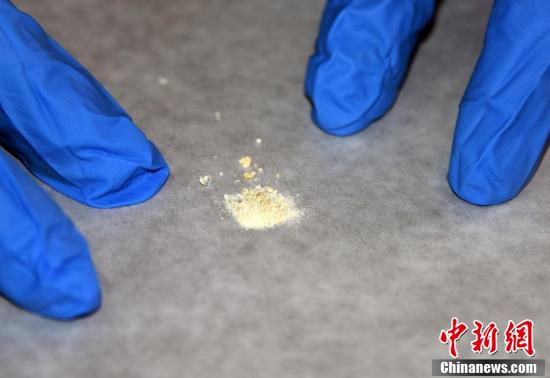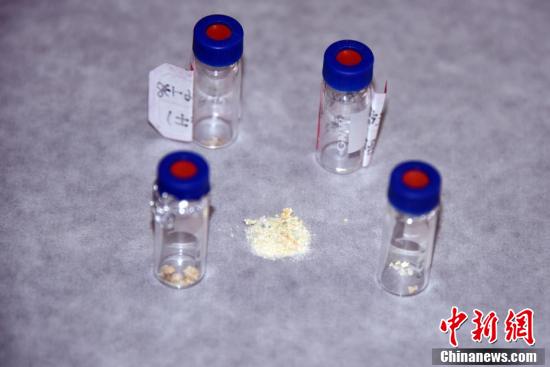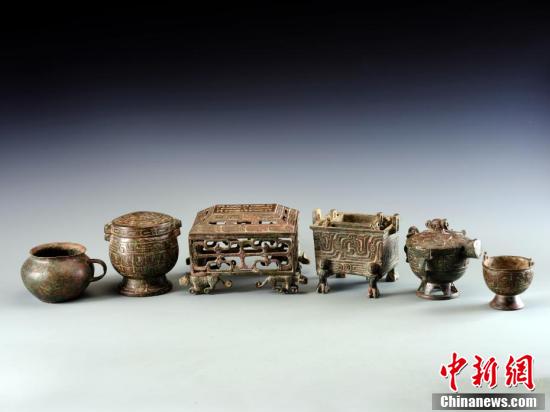
Chinese researchers' latest discovery inside the tomb of a patrician who lived in the early Spring and Autumn Period (770 BC-476 BC) proves that it was common for ancient Chinese to use synthetic white lead makeup at that time, nearly 300 years earlier than in Europe and the Mediterranean region.

Photo shows samples of the residues of synthetic white lead cosmetics found in a bronzeware excavated from a tomb in Liangdai village, northwest China's Shaanxi Province. (China News Service/Sun Zifa)
In a research paper published in the journal “Humanities and Social Sciences Communications” on Sept. 3, researchers confirmed that the residues found in a bronzeware excavated from a tomb in northwest China's Shaanxi Province are the world's earliest synthetic white lead cosmetics.
The paper was co-authored by researchers from the University of the Chinese Academy of Sciences (UCAS) and the Shaanxi Academy of Archaeology, including Han Bin, the lead author of the paper and special research assistants from the UCAS. (People's Daily Online)

Photo shows samples of the residues of synthetic white lead cosmetics found in a bronzeware excavated from a tomb in Liangdai village, northwest China's Shaanxi Province. (China News Service/Sun Zifa)

Han Bin, special research assistant of the University of Chinese Academy of Sciences, handles samples of the residues of synthetic white lead cosmetics found in a bronzeware excavated from a tomb in Liangdai village, northwest China's Shaanxi Province. (China News Service/Sun Zifa)

File photo shows a bronzeware excavated from an ancient tomb (M300) of an ancient female noble in Liangdai village, northwest China's Shaanxi Province. (Photo courtesy of the Shaanxi Academy of Archaeology)

Photo shows a bronzeware excavated from an ancient tomb (M27) at the ruins of the Rui State in the Spring and Autumn Period (770 BC-476 BC) in Liangdai village, northwest China's Shaanxi Province. (Photo courtesy of the Rui State Ruins Museum of Liangdai Village)

Photo shows bronzewares excavated from an ancient tomb (M26) at the ruins of the Rui State in the Spring and Autumn Period (770 BC-476 BC) in Liangdai village, northwest China's Shaanxi Province. (Photo courtesy of the Rui State Ruins Museum of Liangdai Village)

86-10-68597521 (day)
86-10-68597289 (night)

52 Sanlihe Rd., Xicheng District,
Beijing, China (100864)

